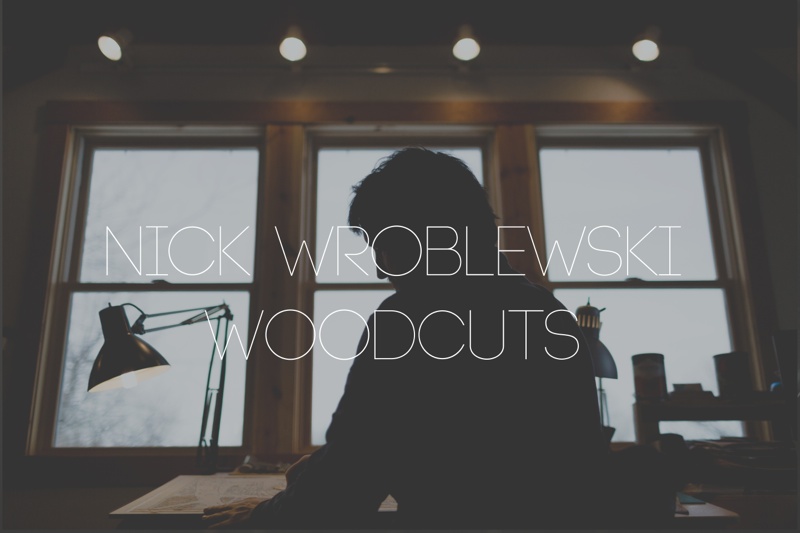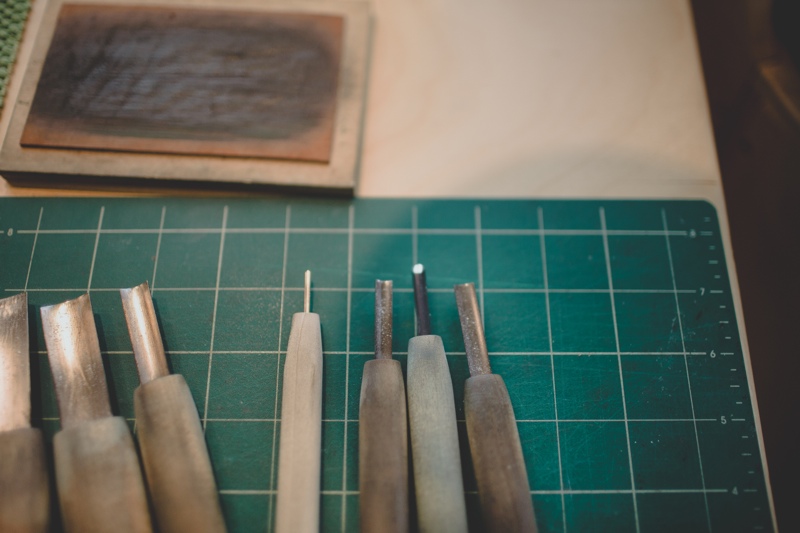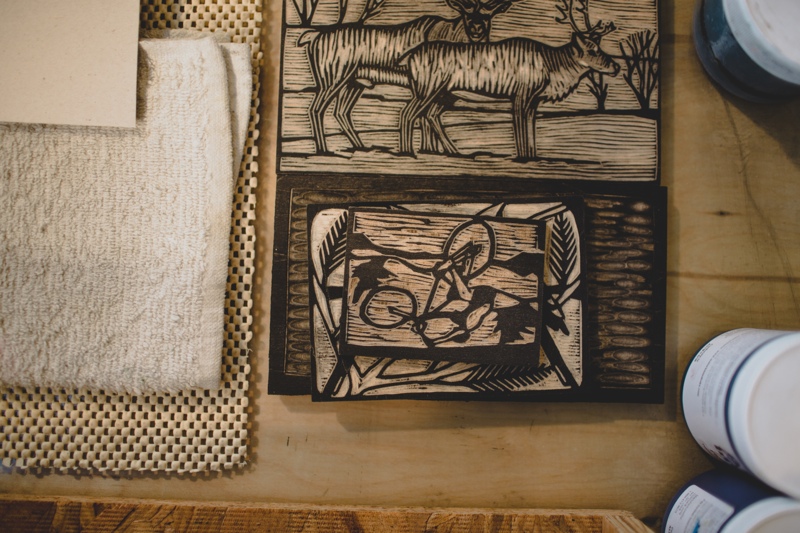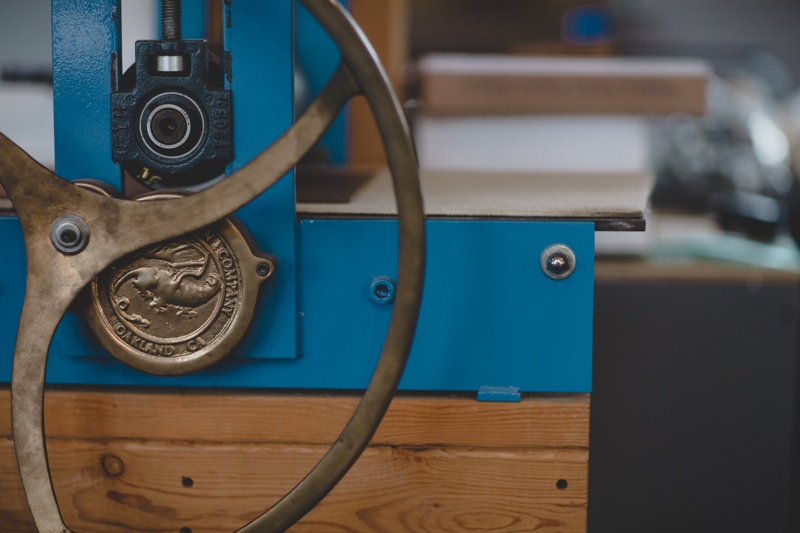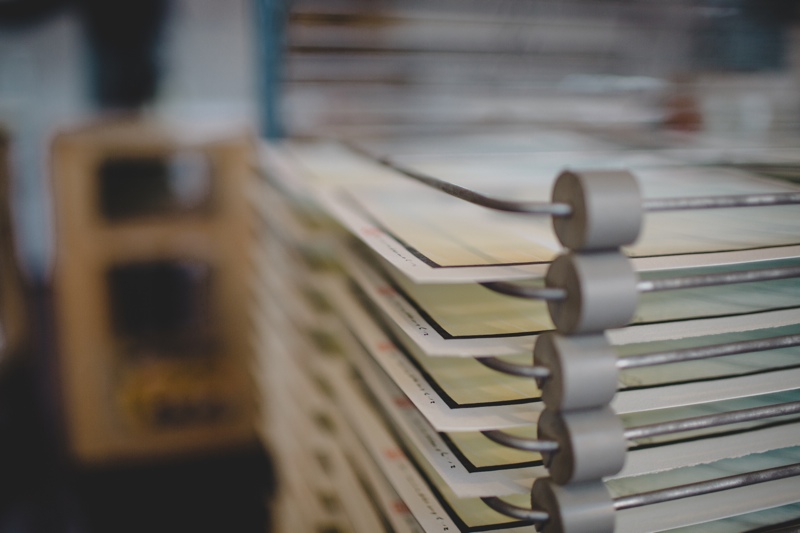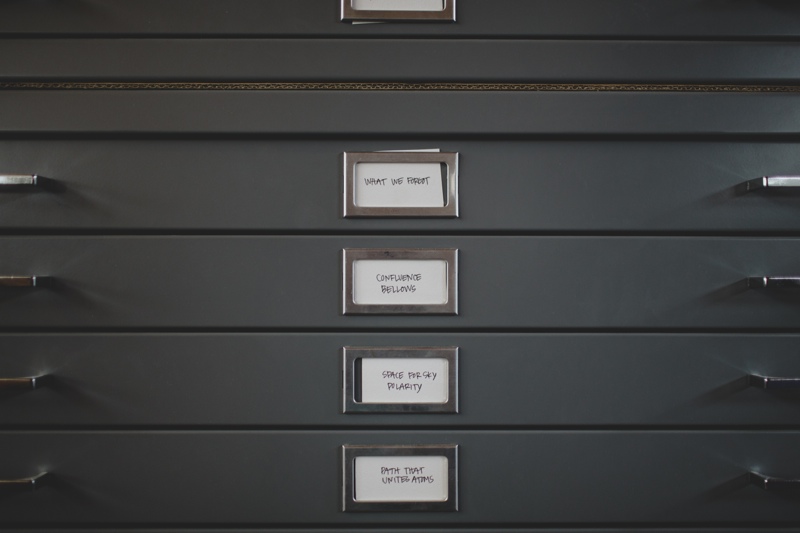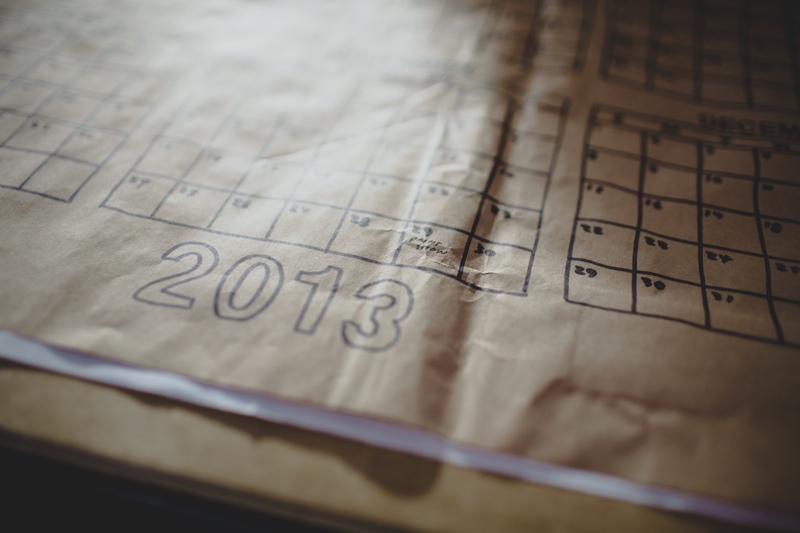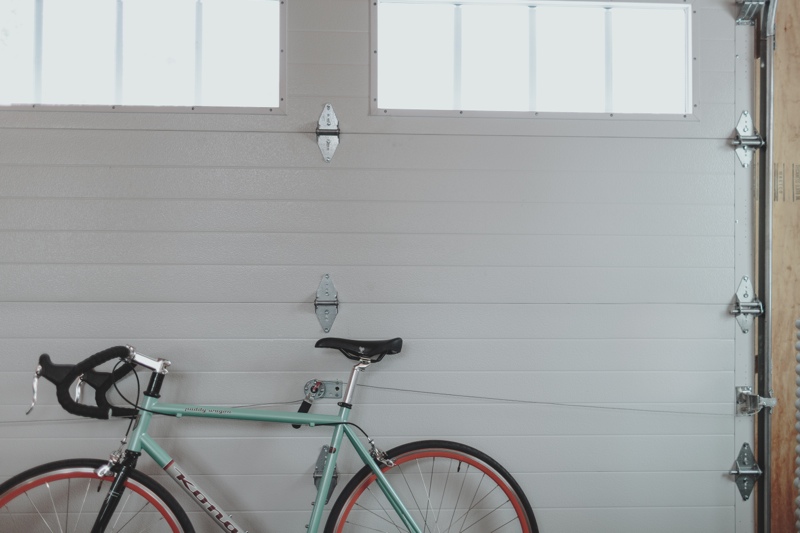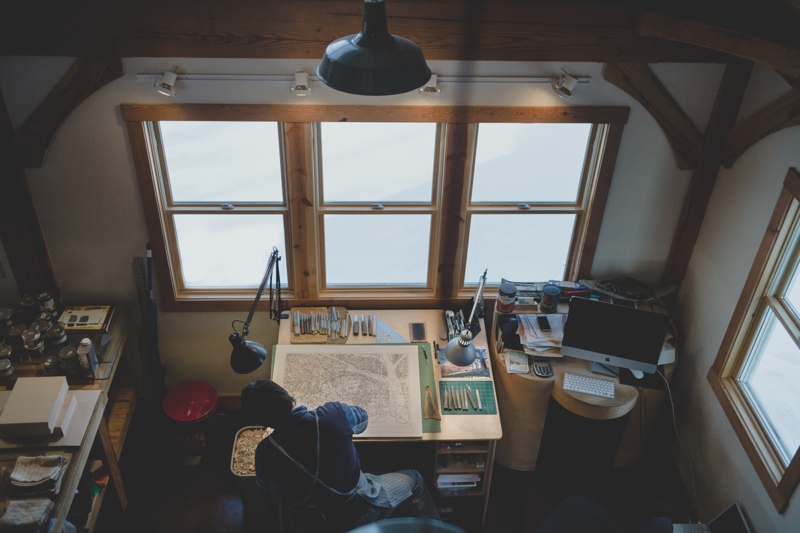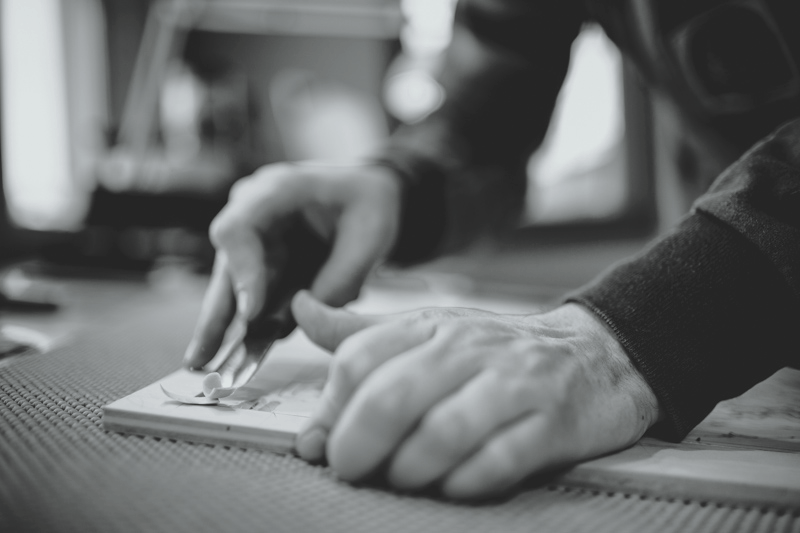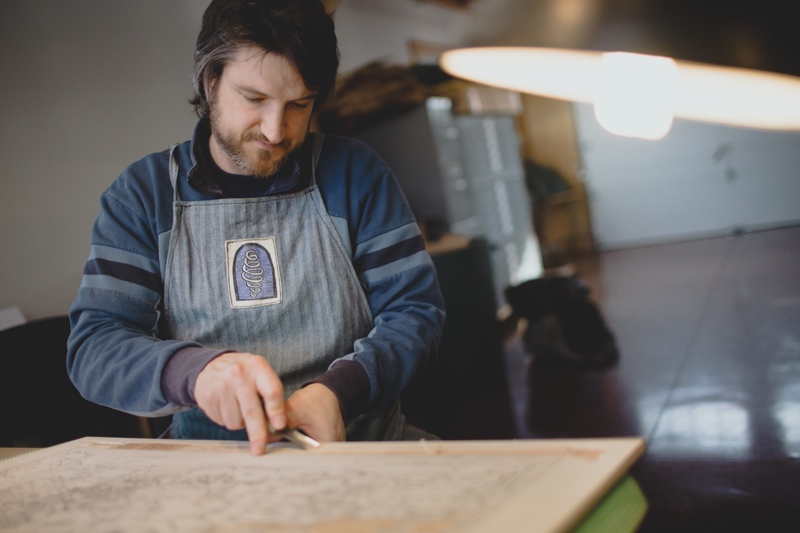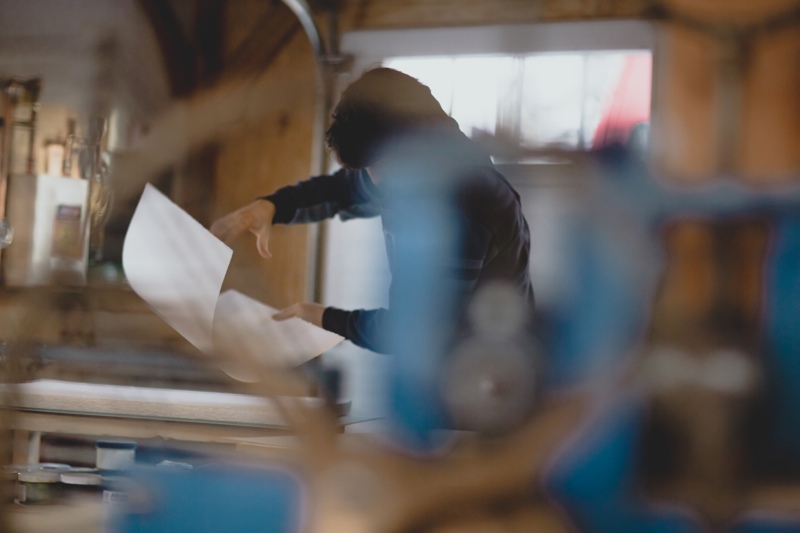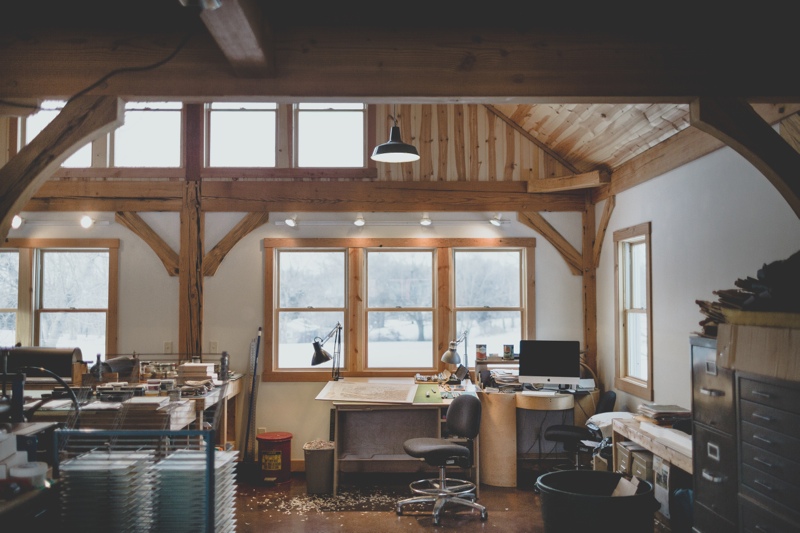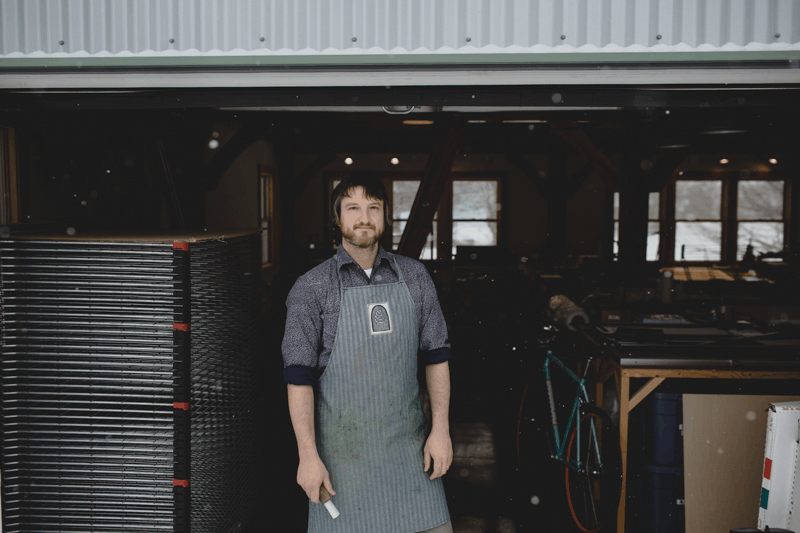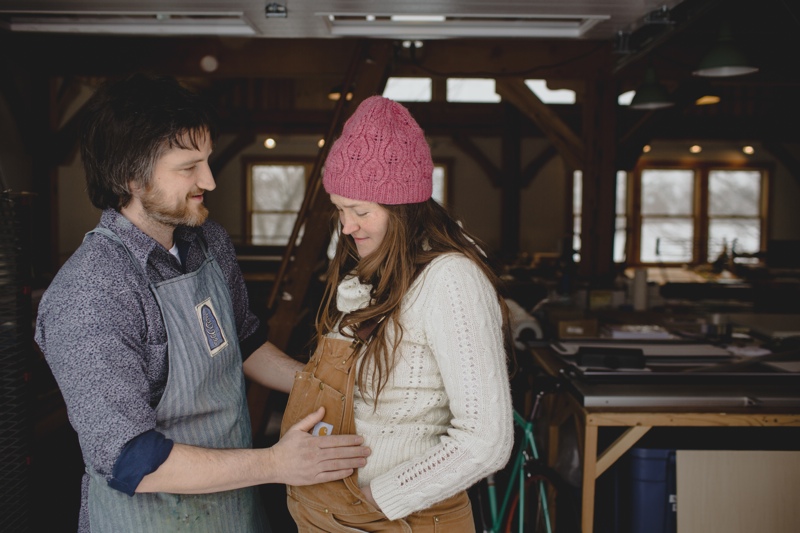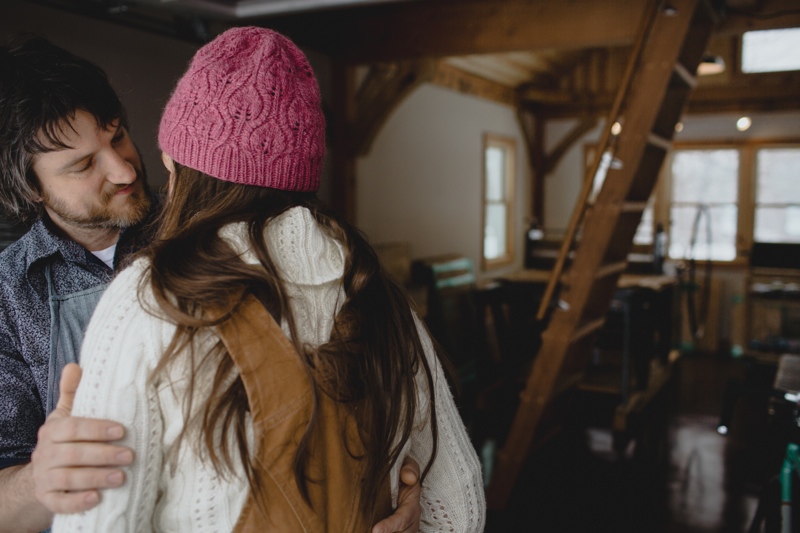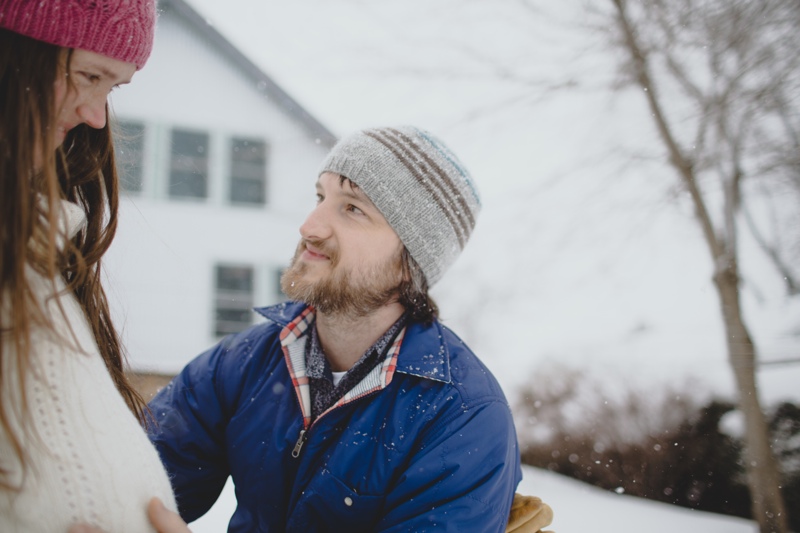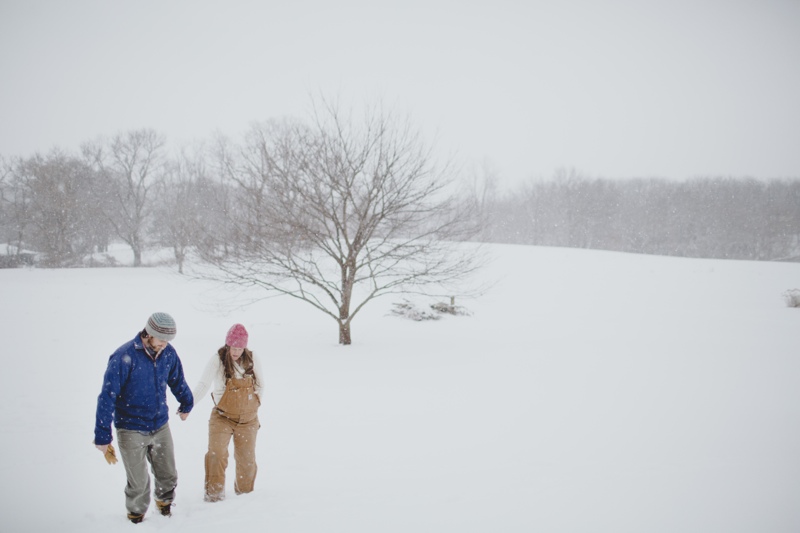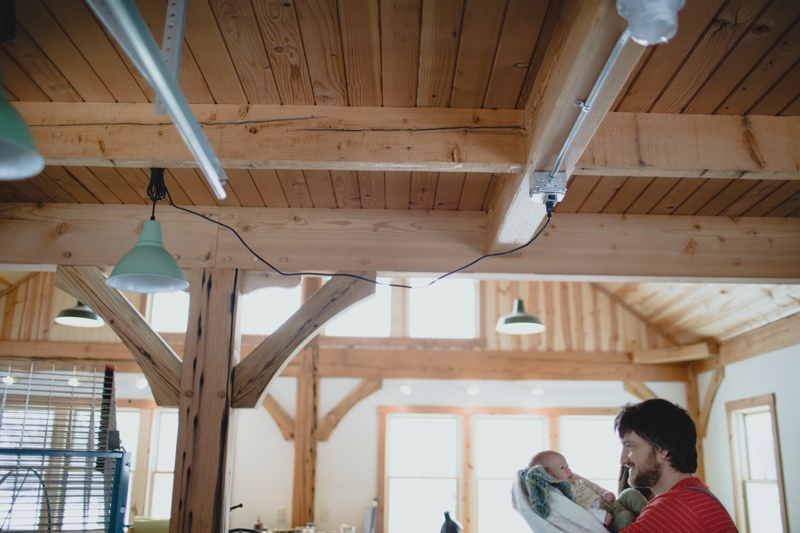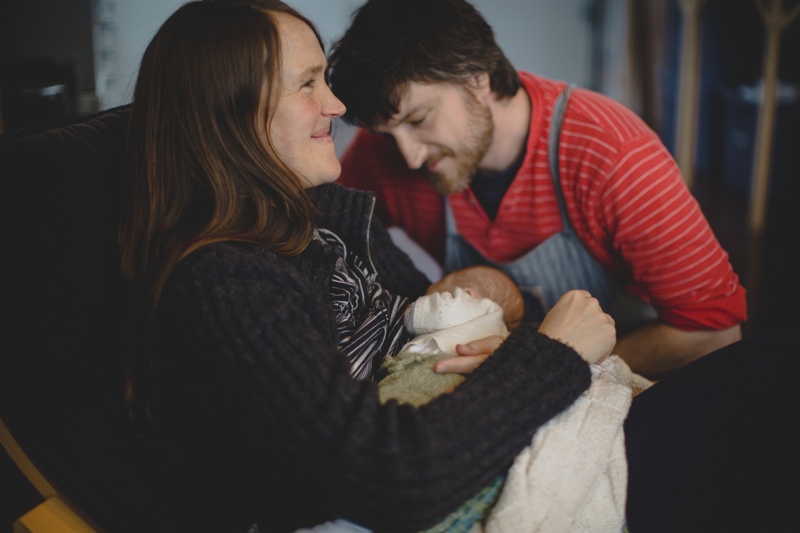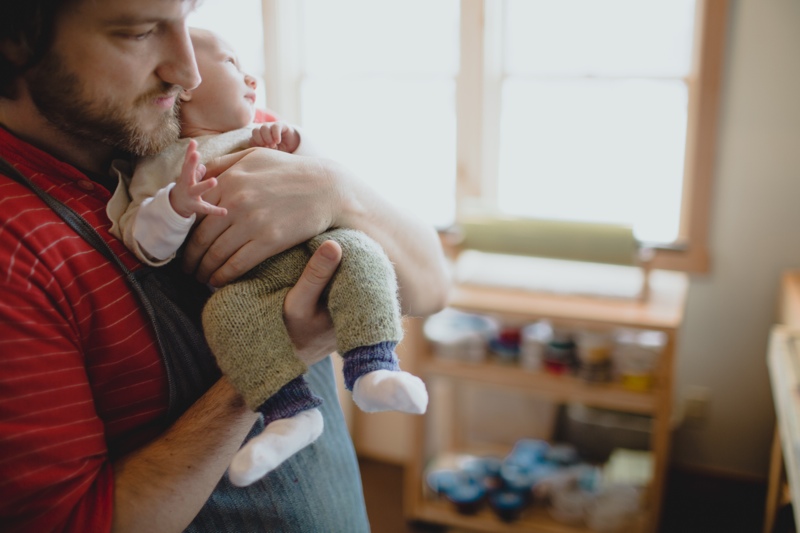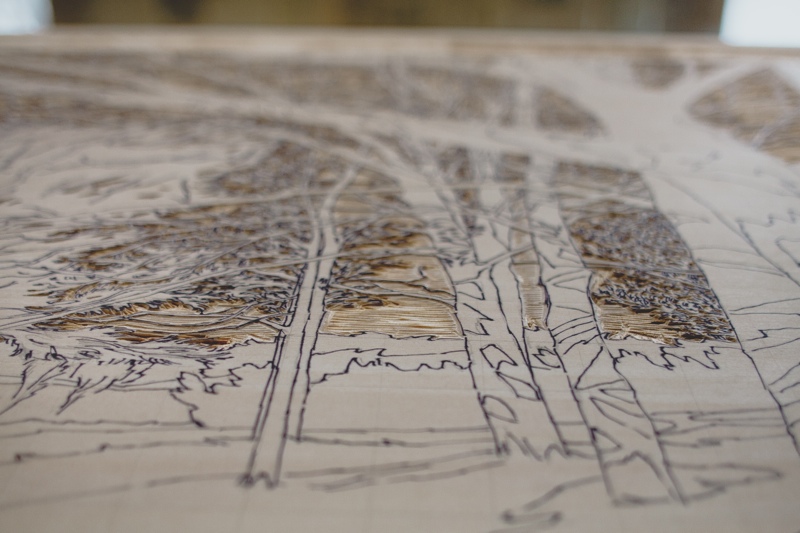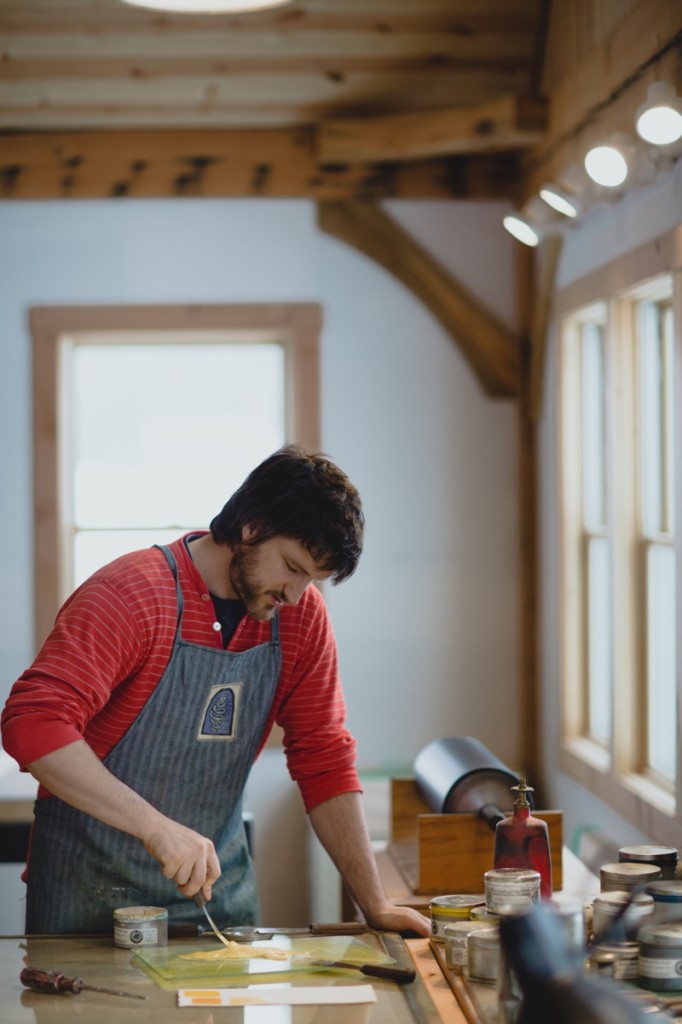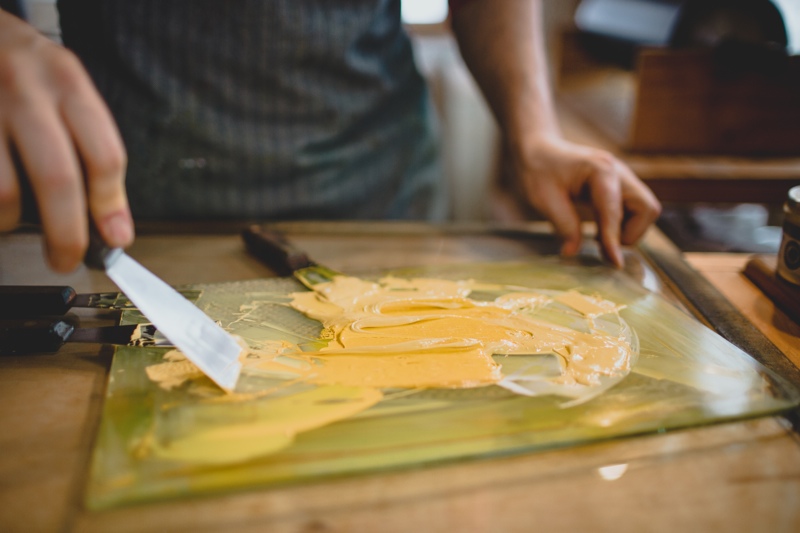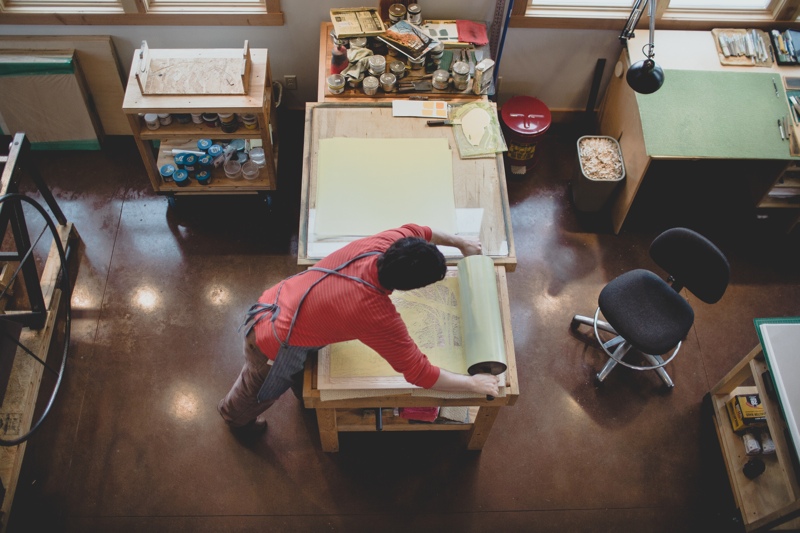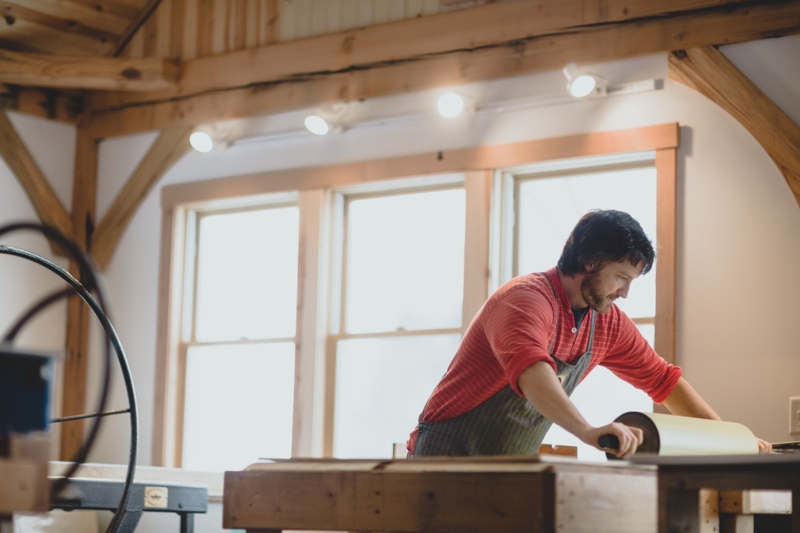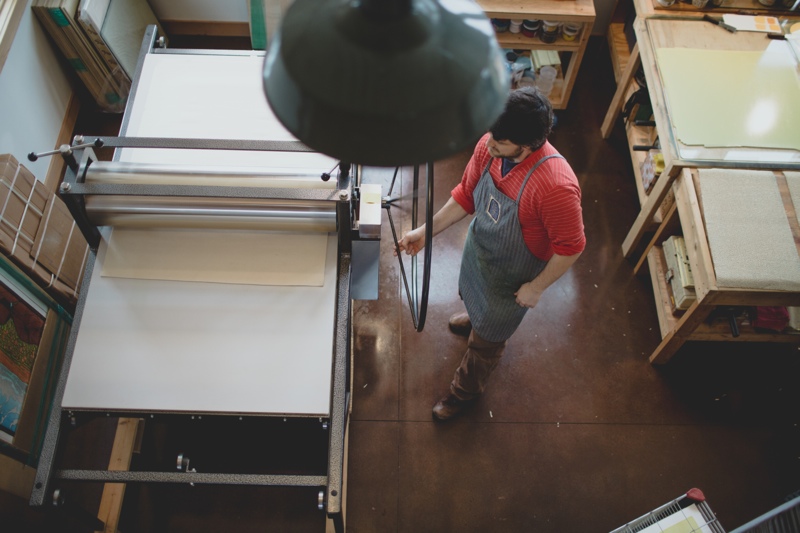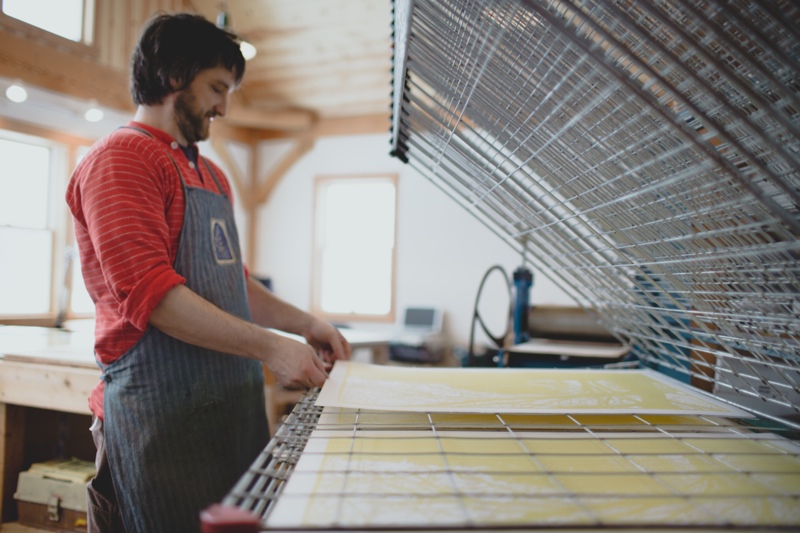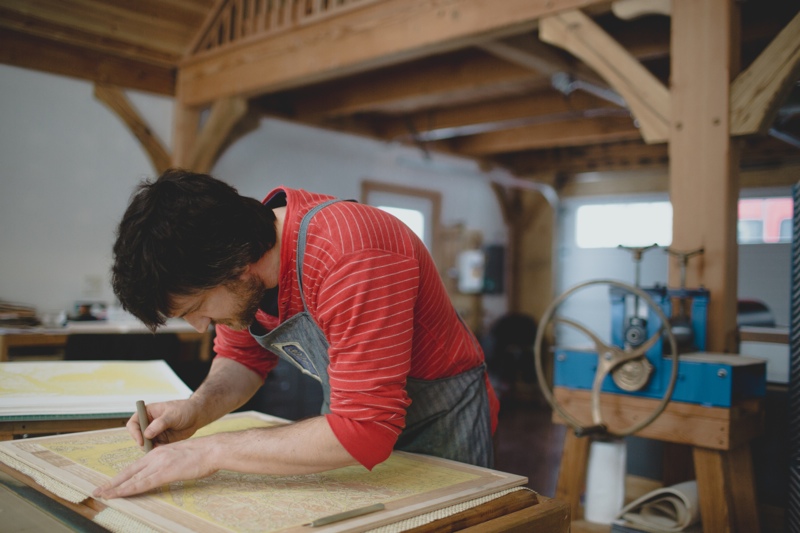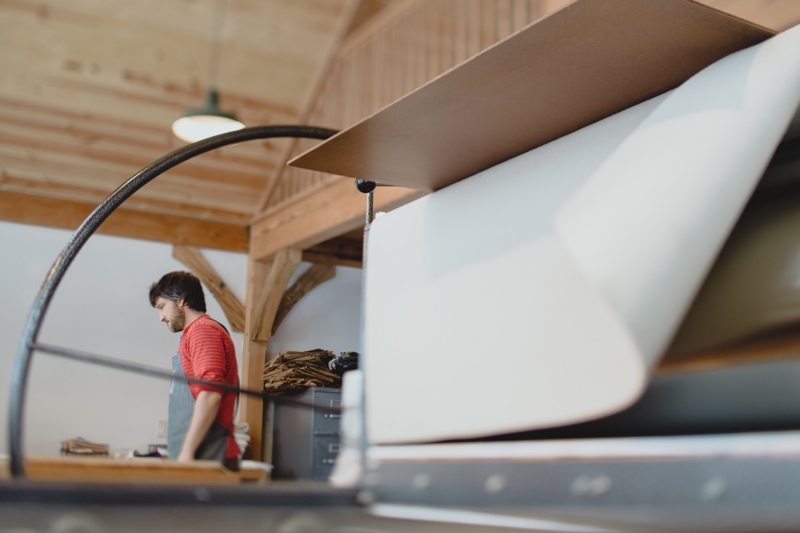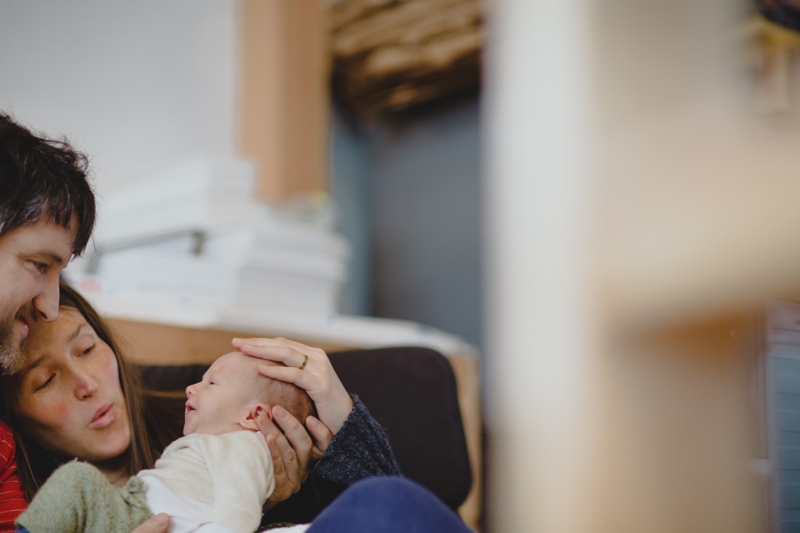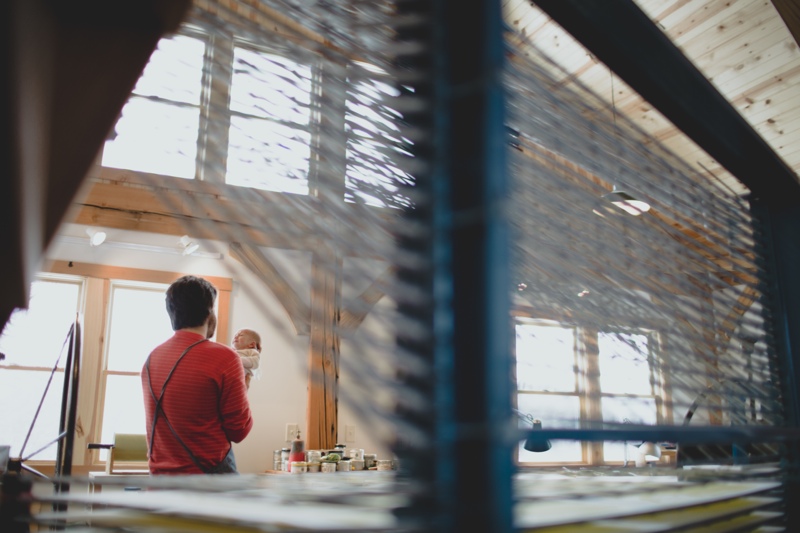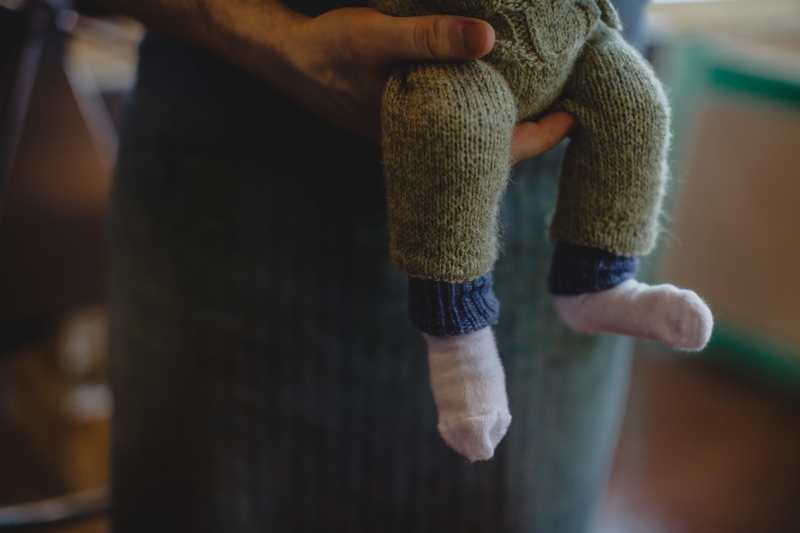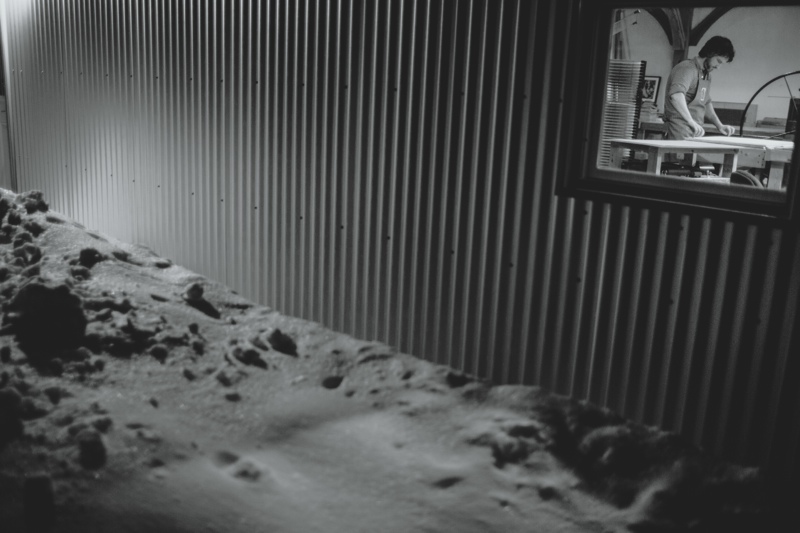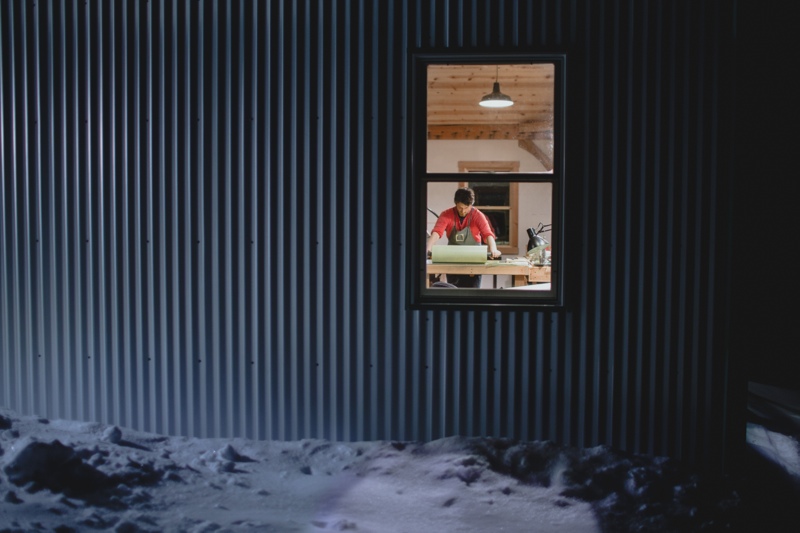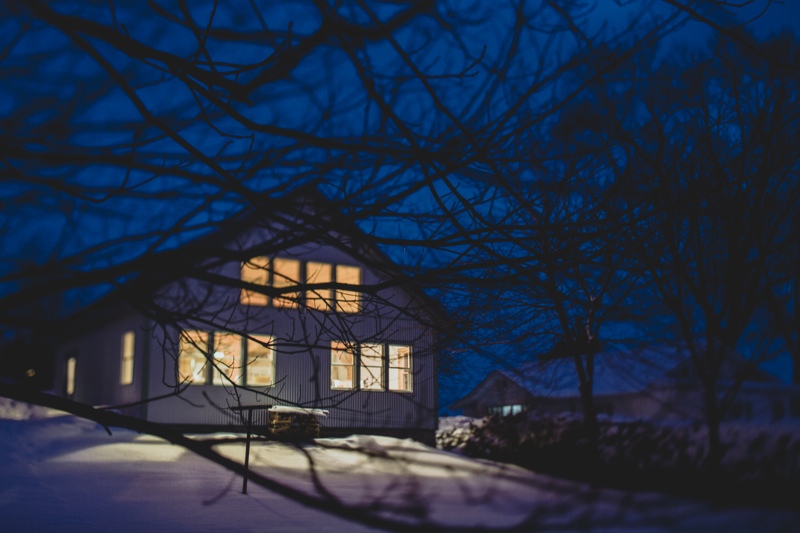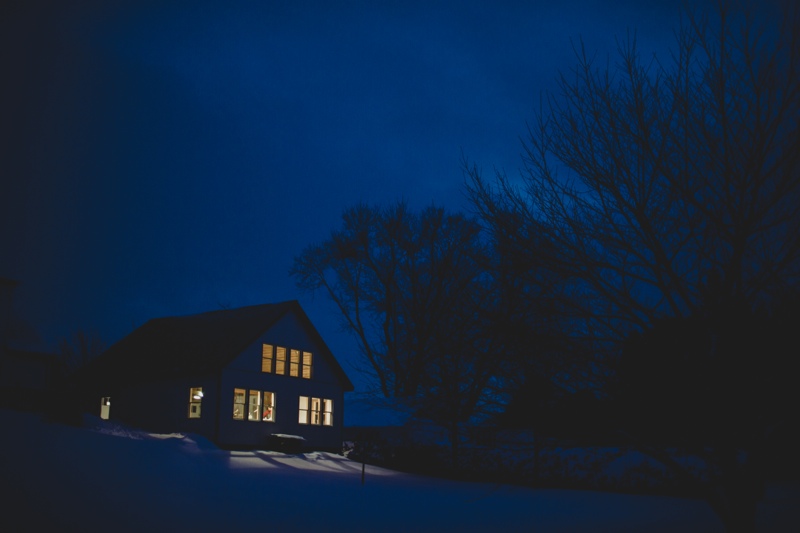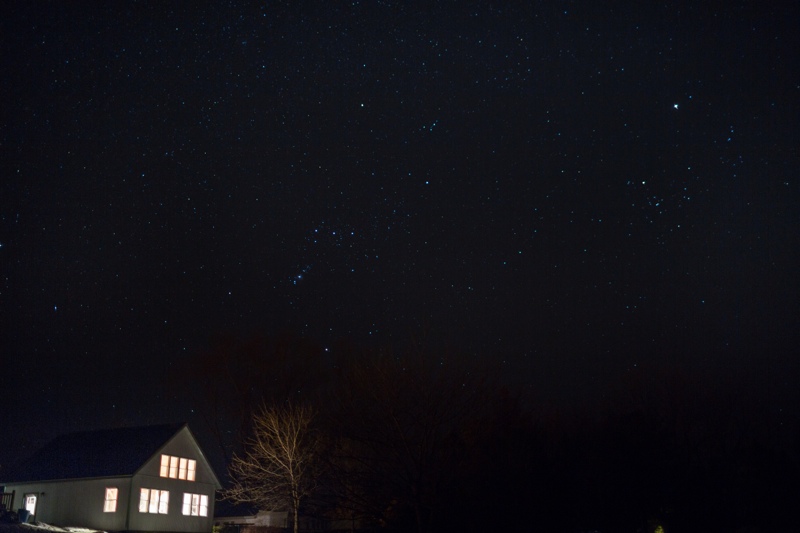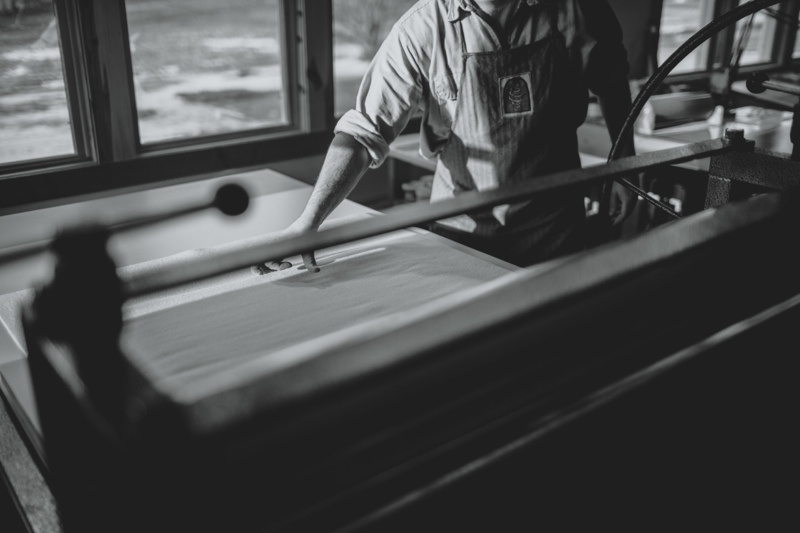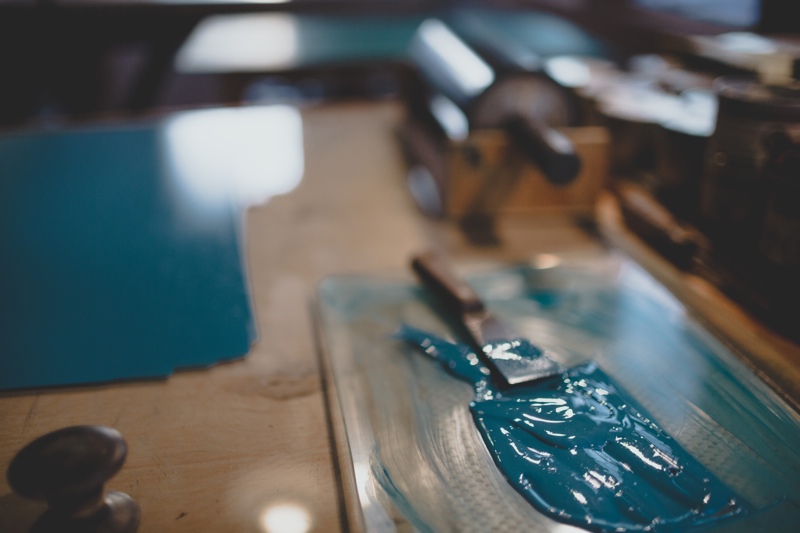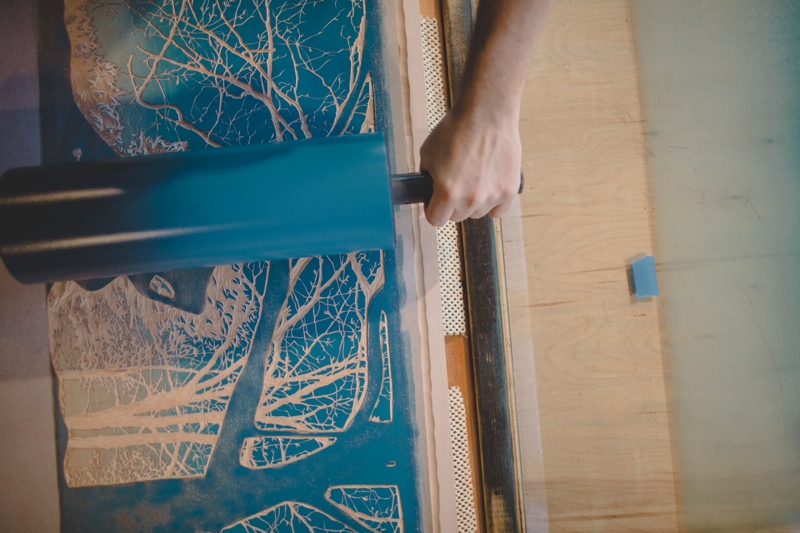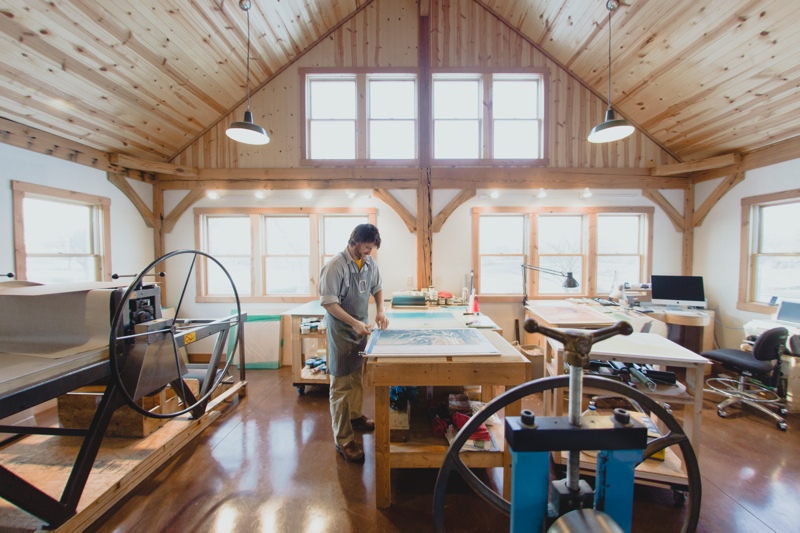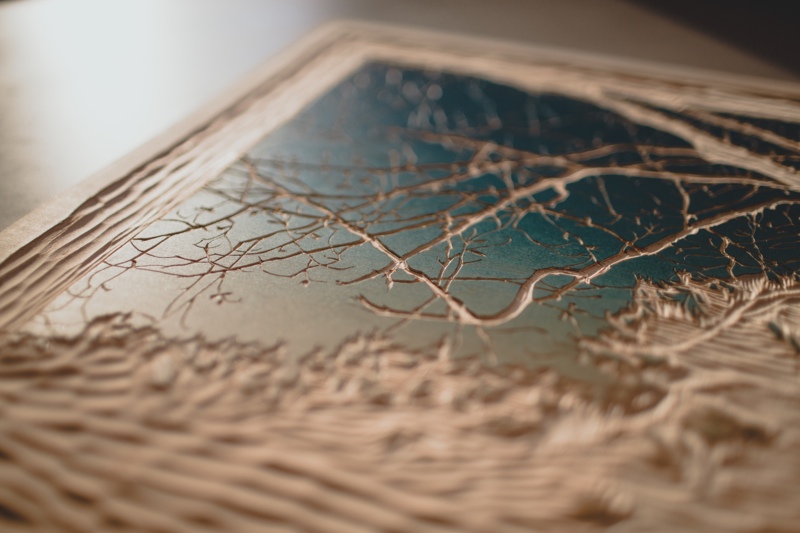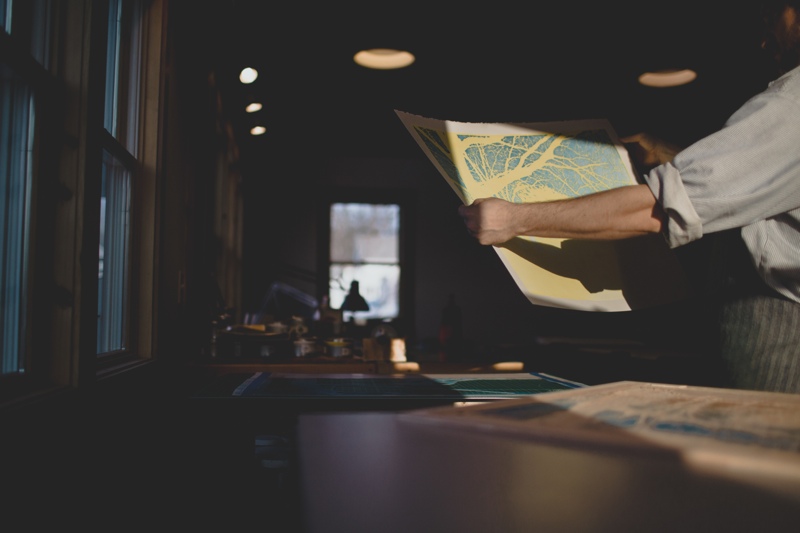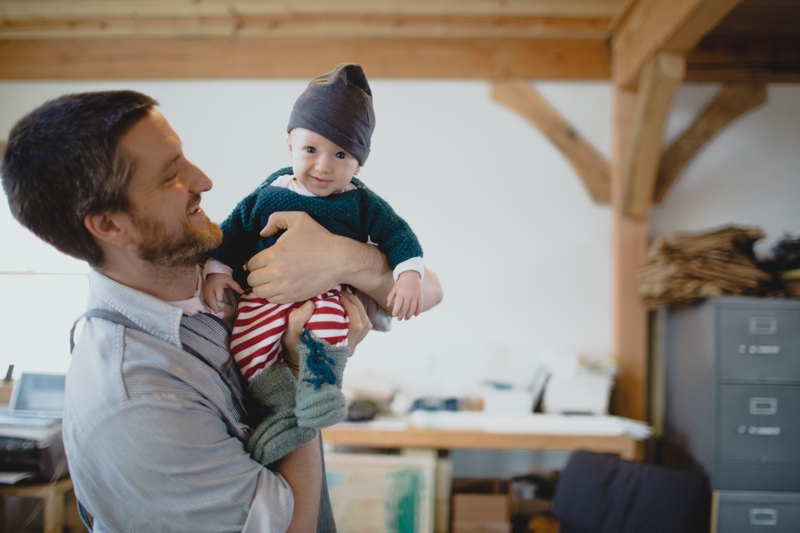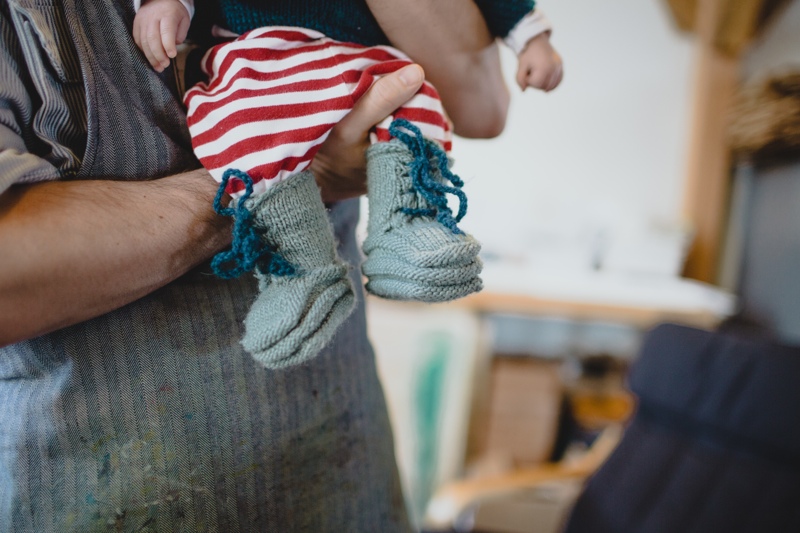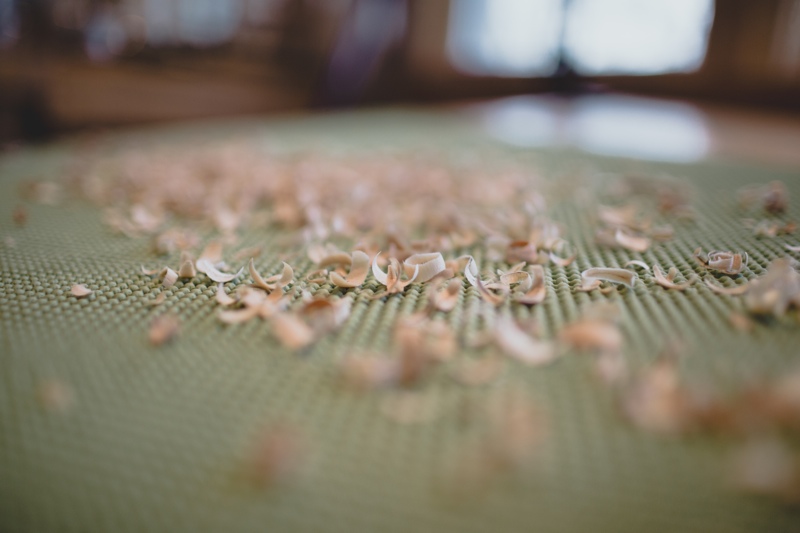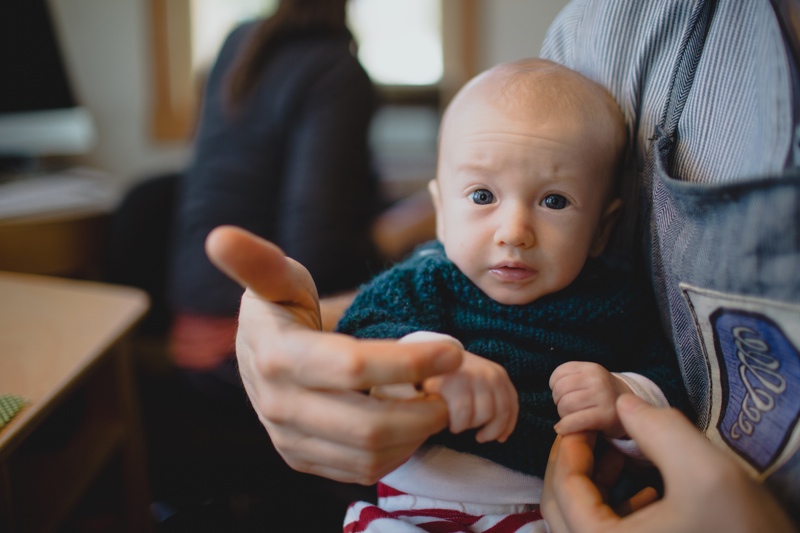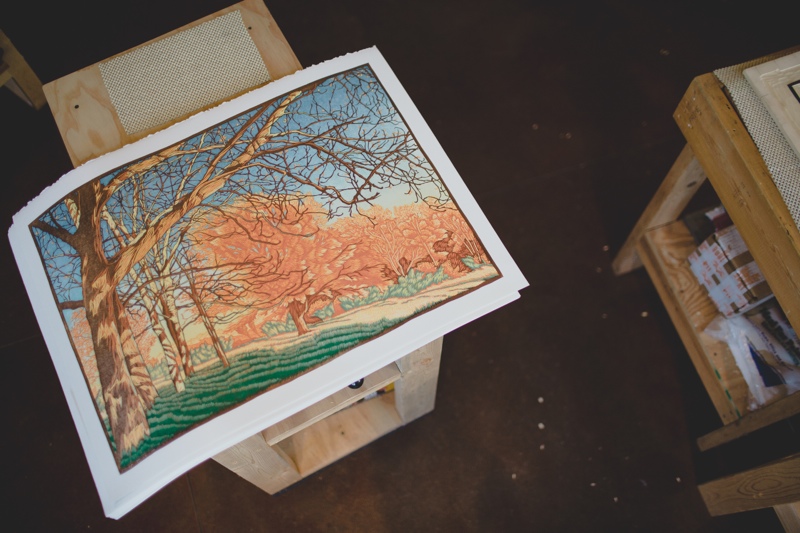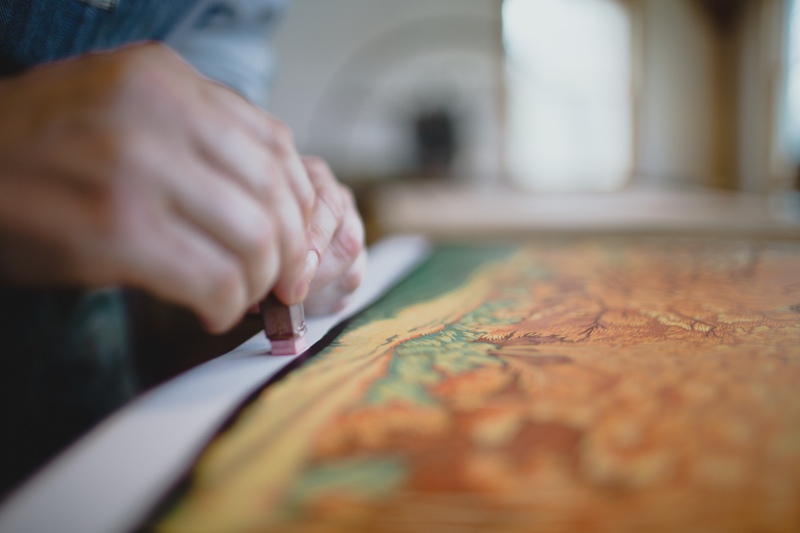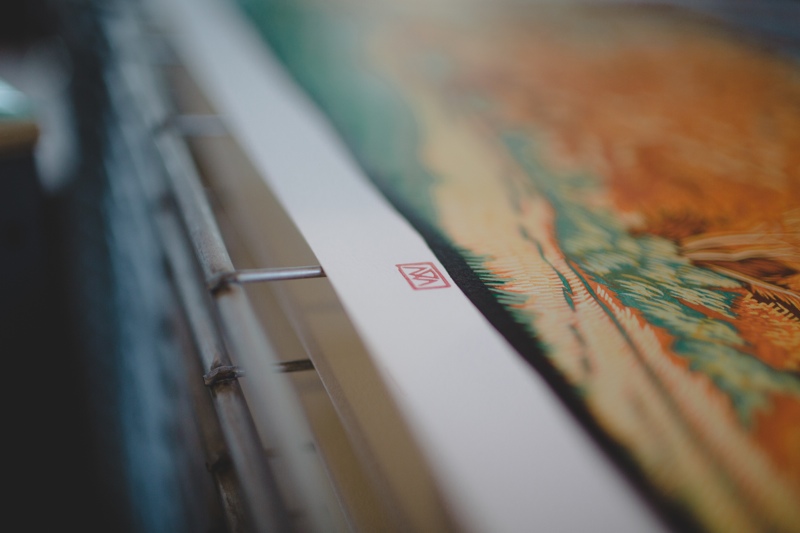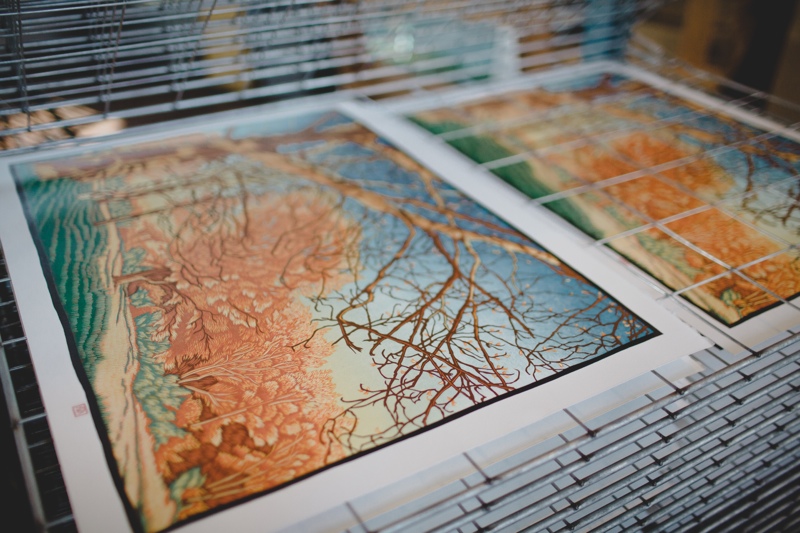Nick Wroblewski – Viroqua, WI
Printmaker of hand cut wood block prints
One of the first times Ray headed over to Nick’s studio was a few months ago. It was snowing, and his wife, Tavniah, was in early labor. The excitement between the two, who were soon to become three, was tangible. And as a midwife, Tavniah knew the ropes of what would unfold over the next few hours, but the degree in which it would change their world was still unknown. Ray left that day and couldn’t sleep, the excitement had rubbed off on him and he kept wondering if the baby had been born yet. :)
Then, a couple weeks later, we both headed over to the studio and were able to witness the giddy expressions of a new mom and dad, the sounds and cries of a tiny baby that hardly seem loud at all :) , and the pace in the studio that had changed, because there was all of a sudden something more important to be thinking about — a new little person to care for. And to stare at because, oh my, is he cute.
We’re so excited to show you this Artist Story. This process of creating hand cut wood block prints is so completely fascinating to us and seeing the detail of how it is done has made us appreciate Nick’s works of art so much more. When you’ve finished looking through the images, be sure to read our interview with Nick for more details on the how and why of his work. And be inspired.
(The following print that we documented took place over the course of approximately 300 hours of work. Just try to wrap your mind around that for a moment…)
>Why Viroqua? What brought you here?
I moved to Viroqua from Madison mainly because the lady who was to become my wife was living here. However, the fact that it is a great place to have children, offers really good access to locally grown organic food, is nestled in a beautiful part of the state, is fairly inexpensive, is located between some big cities, and contains a close-knit community of good folks helps as well. The best thing about it is there’s cold, clear spring water flowing freely from the ground. But it was really just for her.
>Current obsession, creative outlet:
Since moving to Viroqua and working on my house I have become obsessed with building projects. This means I want to try to fix everything myself. It’s a nice break from printmaking, trying to solve three dimensional aesthetic issues and construction challenges. It’s just another form of sculpture. Currently it’s late nights with an architecture ruler, foam core, and a hot glue gun.
>Where did you learn your craft? What brought you into this line of work?
I was fist introduced to relief printmaking through the puppet and mask theater that my family was a part of growing up. There was a tradition of simple, immediate woodcut prints to create bold and stylistic imagery. I was surrounded by older folks that were living life as artists, I never questioned whether it was a realistic profession or not. Then in high school I was told by my art teacher that printmaking was a dangerously addictive undertaking. Once one fully realized it’s potential there was no going back. These experiences helped encourage me to pursue the arts in college. I focused on painting and sculpture but upon graduating returned to relief printmaking as a way to combine both 2D and 3D work. I worked for a little bit at a cooperative printmaking center in Minneapolis and started making the larger, more intricate color woodcuts. Eventually I was able to get my own printing press and since then it’s been full speed ahead.
>What is the best part about working with your hands?
The capacity to make things with one’s own hands is an entirely human ability and one that we seem to be getting more and more removed from. To deliberately choose a profession that relies on the faculty of the hands to create imagery is to embrace and celebrate our own inherent human capability. It is a simple endeavor but reconfirms our experience as one shaped by the creations of our own two hands as enacted by humans for thousands of years. It feels right and I am grateful to be able to earn a living from the things I directly make.
>What’s your favorite part of your schedule/lifestyle?
For me it’s a more human pace. I am able to explore ideas as the inspiration arrives. If I am inclined to build a sauna, then it’s “well what does it take to build a sauna?” This is in a way what being an artist is about; taking the initiative to learn about how things come together, hone the skill, and tackling it. I also work really well when I don’t have to waste time driving back and forth to the workplace. I really like the idea of the backyard studio. Getting a chance to travel and share the work with new folks is also very satisfying.
>You just recently became a father – so exciting! Could you describe how this has changed and added to your work life?
It has trumped all that I have made thus far. It certainly has slowed my break neck pace to just a sore neck pace. It has been an incredible experience that I know will only add to the breadth of my artistic work. And yes it has added to the complexity of a day in the life, but it has also shifted the priorities and that for me is a welcomed blessing. I can’t wait to have a seven year old who knows how to explain a three block reduction woodcut.
>Describe your process.
I make something called two block reduction woodcuts. This means it takes up two city blocks and is simmered in a reduction sauce that oversees a recent logging operation. (Just checking to see if you are reading). Explained in it’s simplest terms, I use a combination of two carved woodblocks to print specific areas of my image. The blocks are carved away throughout the process and used to print additional colors. As they are carved and the image becomes more colorful and apparent, the block are “reduced” to almost nothing and the prints can not be made again. I apply ink to the carved blocks with large rollers, precisely place the paper on the surface and run both through a large printing press that transfers the image to the paper. It’s a very repetitive process that when I am in the thick of it becomes less about the individual print and more about the creation of an “edition” of images.
Find out more about Nick Wroblewski on his website, and follow his work on Facebook.
This post is part of our Artist Stories series – to find out more about why and what we’re doing, head here. Follow along on Facebook to watch for more Artist Stories like this!

